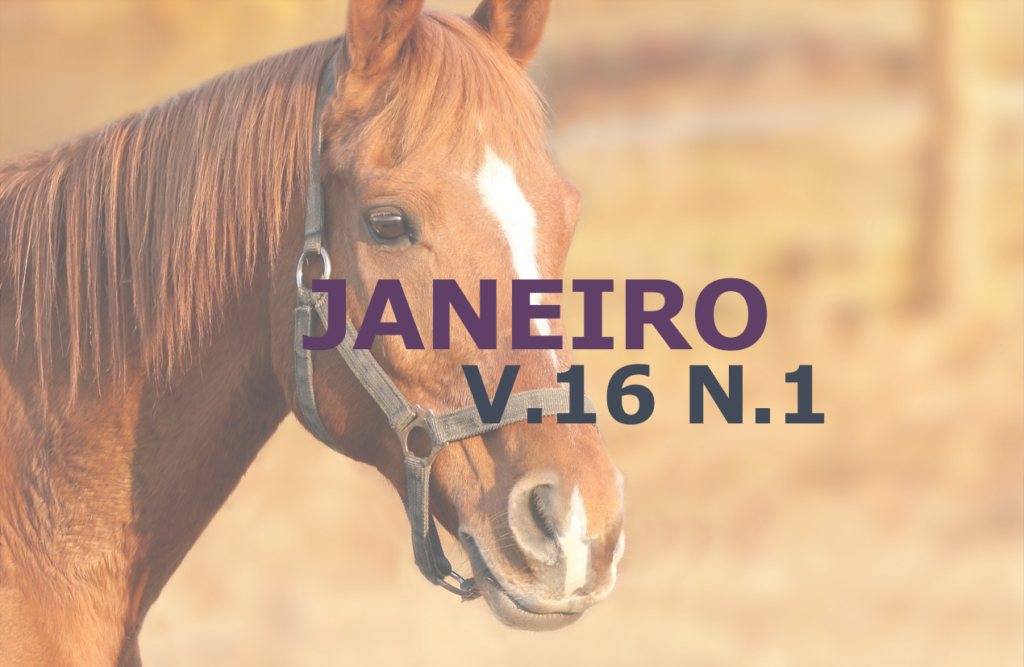Diagnosis of pituitary pars intermedia dysfunction in equine: case report
DOI:
https://doi.org/10.31533/pubvet.v16n01a1007.1-5Keywords:
Hirsutism, dexamethasone, neurodegenerative disease, pituitary pars intermedia disfunctionAbstract
Pituitary Pars Intermedia Dysfunction (PPID), also called equine Cushing's disease, is the most common endocrine disorder of elderly horses. A variable combination of clinical signs is observed, the most common being hirsutism. The diagnosis is based on the clinical signs presented and laboratory tests of the baseline ACTH concentration or the dexamethasone suppression test, the most commonly used ones. In this study, the diagnosis of PPID in a mare, Creole, 24 years old, is reported by means of the dexamethasone suppression test and hirsutism as the only clinical sign.
References
Arnaldi, G., Angeli, A., Atkinson, A. B., Bertagna, X., Cavagnini, F., Chrousos, G. P., Fava, G. A., Findling, J. W., Gaillard, R. C., & Grossman, A. B. (2003). Diagnosis and complications of Cushing’s syndrome: a consensus statement. The Journal of Clinical Endocrinology & Metabolism, 88(12), 5593–5602. https://doi.org/10.1210/jc.2003-030871.
Del Pino, F. J. G. (2009). Síndrome de Cushing en Equinos (Equine Cushing’s. REDVET, 10(7).
Del Pino, T. S., Pazinato, F. M., & Curcio, B. R. (2017). Síndrome de Cushing em égua da raça crioula - relato de caso.
Durham, A. E., McGowan, C. M., Fey, K., Tamzali, Y., & Van der Kolk, J. H. (2014). Pituitary pars intermedia dysfunction: diagnosis and treatment. Equine Veterinary Education, 26(4), 216–223.
Dybdal, N. O., Hargreaves, K. M., Madigan, J. E., Gribble, D. H., Kennedy, P. C., & Stabenfeldt, G. H. (1994). Diagnostic testing for pituitary pars intermedia dysfunction in horses. Journal of the American Veterinary Medical Association, 204(4), 627–632.
Elliott, M. (2001). Cushing’s Disease: a new approach to therapy in equine and canine patients. British Homoeopathic Journal, 90(1), 33–36.
Franco, F. A., Santos, F. C. C., Costa, G. V., Oliveira, H. R., Ugolini, L. W., Bondan, C., & Alves, L. P. (2021). Conduta diagnóstica em equino da raça Crioula com síndrome de Cushing. Acta Scientiae Veterinariae, 49(1), 598.
Hatazoe, T., Kawaguchi, H., Hobo, S., & Misumi, K. (2015). Pituitary pars intermedia dysfunction (equine Cushing’s disease) in a Thoroughbred stallion: a single report. Journal of Equine Science, 26(4), 125–128.
Kastelan, D., Dusek, T., Kraljevic, I., Polasek, O., Giljevic, Z., Solak, M., Salek, S. Z., Jelcic, J., Aganovic, I., & Korsic, M. (2009). Hypercoagulability in Cushing’s syndrome: the role of specific haemostatic and fibrinolytic markers. Endocrine, 36(1), 70–74. https://doi.org/10.1007/s12020-009-9186-y.
Kooistra, H. S., & Galac, S. (2012). Recent advances in the diagnosis of Cushing’s syndrome in dogs. Topics in Companion Animal Medicine, 27(1), 21–24. https://doi.org/10.1053/j.tcam.2012.06.001.
McGowan, C. (2013). Hyperadrenocorticism (Pituitary Pars Intermedia Dysfunction) in horses. Clinical Endocrinology of Companion Animals, 11, 100–114.
McGowan, T. W., Pinchbeck, G. P., & McGowan, C. M. (2012). Prevalence, risk factors and clinical signs predictive for equine pituitary pars intermedia dysfunction in aged horses. Equine Veterinary Journal, 45(1), 74–79.
Monteiro, R. M. S. F. L. (2015). Abordagem à disfunção da PARS Intermedia da glândula pituitária de equinos. Universidade Federal do Rio Grande do Sul.
Pereira, M. A. A., Araújo, R. S., & Bisi, H. (2001). Síndrome de Cushing associada à hiperplasia macronodular das adrenais: apresentação de um caso e revisão da literatura. Arquivos Brasileiros de Endocrinologia & Metabologia, 45(6), 619–627.
Schott, H. C. (2002). Pituitary pars intermedia dysfunction: equine Cushing’s disease. Veterinary Clinics: Equine Practice, 18(2), 237–270.
Smets, P., Meyer, E., Maddens, B., & Daminet, S. (2010). Cushing’s syndrome, glucocorticoids and the kidney. General and Comparative Endocrinology, 169(1), 1–10. https://doi.org/10.1016/j.ygcen.2010.07.004.
Downloads
Published
Issue
Section
License
Copyright (c) 2022 Luzia Leon Coelho Leal, Kennya Mansiero Sanson Couto Souto Maior, Flávia Umpierre Bueno, Carlos Afonso de Castro Beck

This work is licensed under a Creative Commons Attribution 4.0 International License.
Você tem o direito de:
Compartilhar — copiar e redistribuir o material em qualquer suporte ou formato
Adaptar — remixar, transformar, e criar a partir do material para qualquer fim, mesmo que comercial.
O licenciante não pode revogar estes direitos desde que você respeite os termos da licença. De acordo com os termos seguintes:
Atribuição
— Você deve dar o crédito apropriado, prover um link para a licença e indicar se mudanças foram feitas. Você deve fazê-lo em qualquer circunstância razoável, mas de nenhuma maneira que sugira que o licenciante apoia você ou o seu uso. Sem restrições adicionais
— Você não pode aplicar termos jurídicos ou medidas de caráter tecnológico que restrinjam legalmente outros de fazerem algo que a licença permita.





